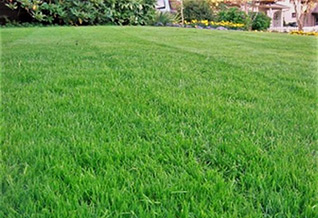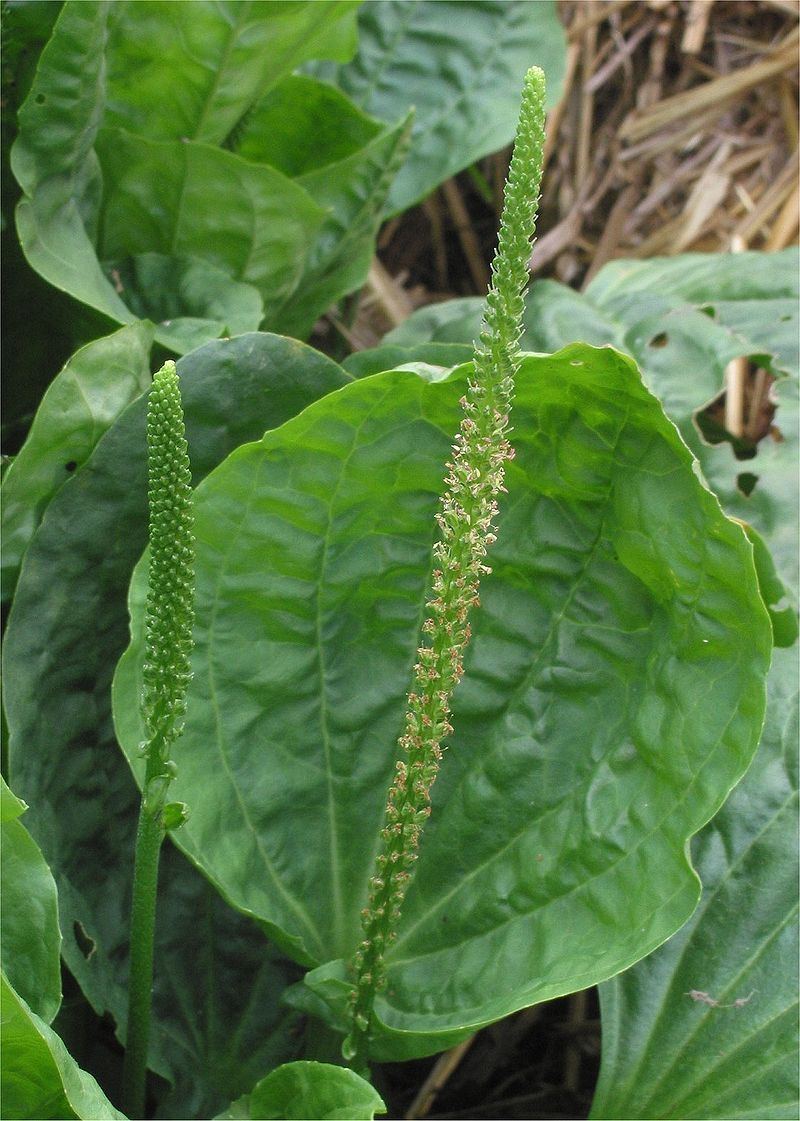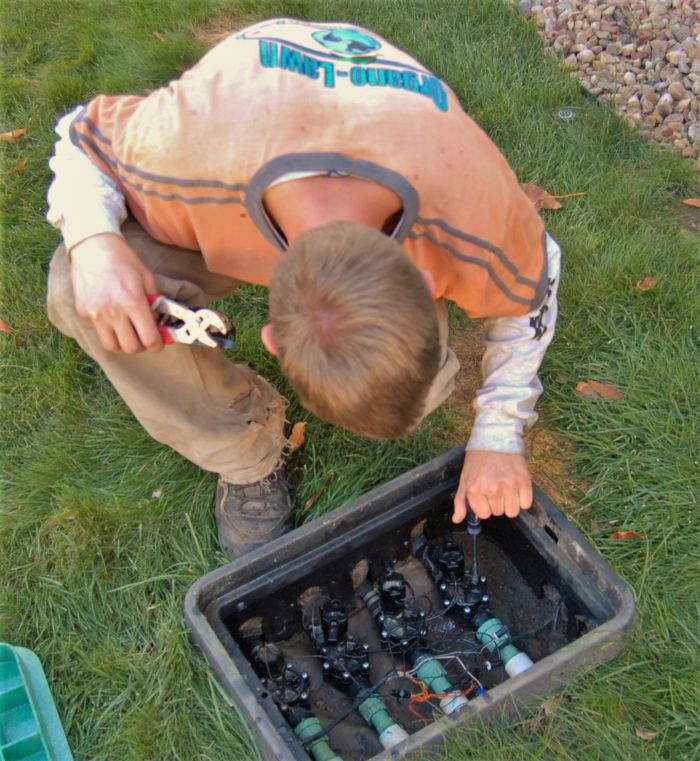Organo-Lawn will often visit properties that appear to have new exotic diseases infesting lawns in the Front Range of Colorado, but these “diseases” often have a much simpler explanation. The photo to the right is a great example of why lawn care is something that should be left to professional yard care companies.
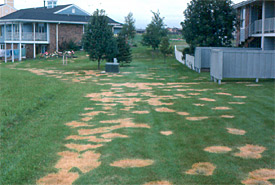
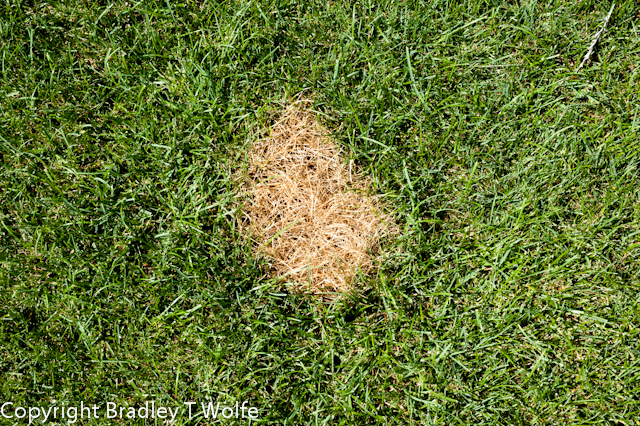
The Roundup® Disease
Picture this… Fort Collins, 2018: A customer had weeds coming up in their lawn, their son thinking he would be helpful went and grabbed weed killer from the garage and decided to spot spray all of the weeds in the lawn. It worked great; the weeds died. Unfortunately, so did all the grass that was touched by the spray, leaving this awful looking “disease” in the lawn, or so the customer thought. They gave us a call saying they have a lawn disease that just appeared all of the sudden. When we get out there, we saw that this was no lawn disease we had seen before. We let them know that those dead areas were from a chemical being put on the lawn. The customer told us that nothing of the sort had been done. We asked him if he or anybody in the house had spot sprayed the lawn using Roundup. He said, absolutely not. The very next day the customer called us to let us know that his son had used Roundup® on his lawn. Roundup®, also known by its chemical name Glyphosate, will kill all vegetation including grass. Many homeowners and even other yard care companies have made the mistake of spot-applying Roundup® on a lawn believing that they could be very careful and spray only the weed without hurting the grass. The result of the application often looks like a disease at first glance, but upon closer investigation, the true cause of the damage is a lack of understanding what pesticide is best for lawns. This homeowner’s grass required expensive landscaping and new sod to repair the damage caused by the Glyphosate application.
What Is Causing The Brown Lawn Spots?
We’ve seen many other instances of chemical reactions being mistaken as lawn diseases. One common lawn problem that is mistaken for a disease are dog urine damage. These spots are caused by a nitrogen burn of the lawn and the the ammonia in their urine burns the grass. Another example would be when a mowing company went to refill the lawn mower that ran out of gas. Unfortunately, they refilled the lawn mower on the lawn and they spilled some of the gasoline onto the grass area. This left a strange patch of dead grass out in the middle of lawn. The customer could not figure out what had happened to their lawn. In the end, there is an explanation for every “lawn disease”, even when it is not actually a disease!

